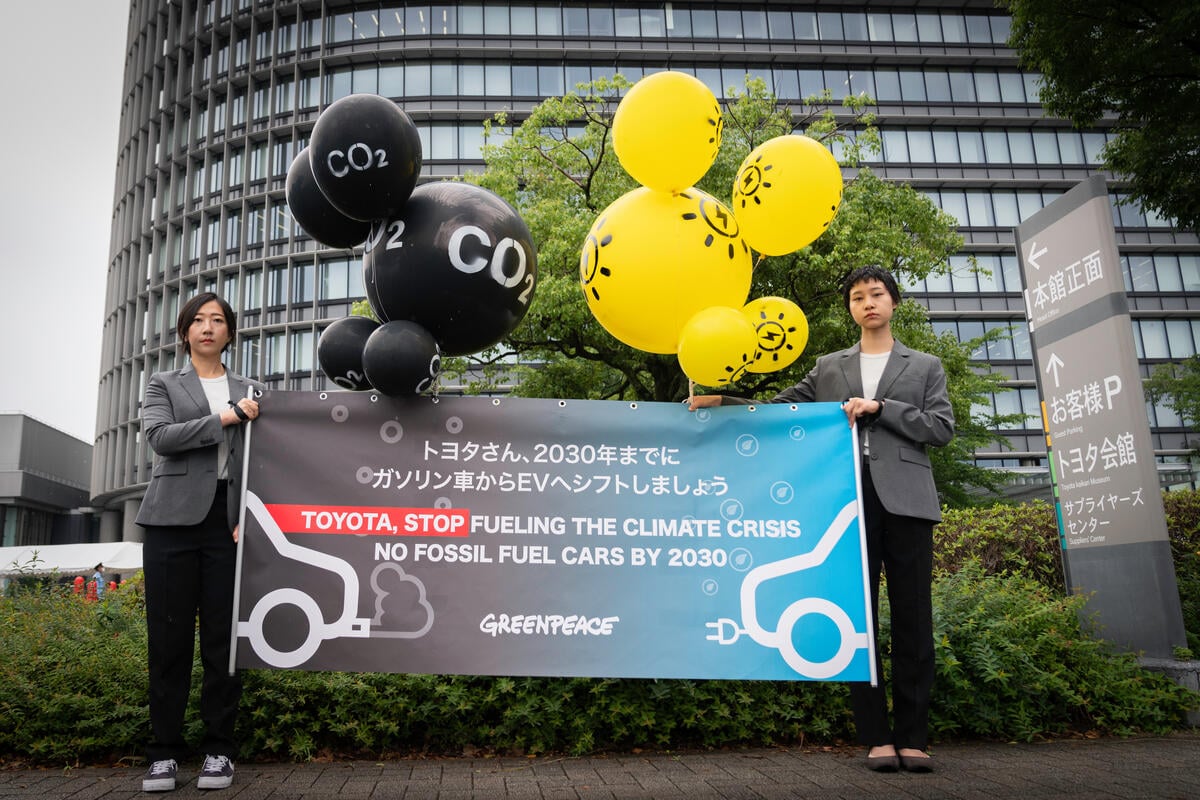Beijing – At least 10.34 gigawatts (GW) of new coal power was approved across China in the first six months of 2024, new research from Greenpeace East Asia shows, marking a potential turning point in China’s energy transition, as wind and solar power capacity continues to expand.
Greenpeace East Asia Beijing-based project lead Gao Yuhe (she/her) said:
“China has pumped the brakes on coal so far in 2024. Wind and solar expansion continues to be strong. Since 2022, we saw a troubling trend of coal approvals increasing despite renewable energy growth which should displace coal. We may now be seeing a turning point. One question remains here. Are Chinese provinces slowing down coal approvals because they’ve already approved so many coal projects during this five-year plan period? Or are these the last gasps of coal power in an energy transition that has seen coal become increasingly impractical? Only time can tell. A rebound remains possible until there are firm measures put in place to directly prevent further coal expansion. And without more proactive support for wind and solar grid connectivity, a post-peak plateau remains a risk.”
Greenpeace East Asia reviewed project approval documents to identify 14 new coal-fired power projects approved in the first six months of 2024, with a combined capacity of 10.34 GW,a 79.5% decrease from total approvals in the 50.4 GW approved first six months of 2023. One concerning trend is that 71.4% of new 2024 approvals were coal-fired power facilities with generation capacities above 660 megawatts (MW), continuing a trend Greenpeace East Asia first identified in 2023 (link in Chinese). 70.73% of new projects in 2023 were above 1 GW.
“These facilities are quite large. Coal facilities do not nimbly switch on and offline. And large facilities are particularly inefficient coming online in terms of time, money, or total emissions. This somewhat contradicts the stated purpose of using these facilities to support periods of peak energy demand. We are seeing a positive trend in decreasing new approvals. But the new approvals themselves are quite concerning,” Gao said.
The majority new 2024 coal approvals came from a few provinces, including 2 GW in Anhui, 2 GW in Jiangxi, and 1.32 GW in Xinjiang. Anhui has for three years running now continued extensive new coal approvals, approving 19.18 GW from January 2022 through June 2024.
In the first half of 2024, China’s total coal capacity of 11.7 terawatts (TW), or 11,700 GW, was for the first time exceeded by wind and solar capacity, which by the end of June accounted for 11.8 TW. Combined wind and solar capacity by the end of the first half 2024 accounted for 38.41% of total generation capacity, while coal accounted for 38.08%. Of all new capacity connected to the grid during the first six months of 2024, wind and solar power accounted for 84.2% of all new-connected capacity.
“Amid powerful wind and solar growth, connecting these new energy sources to China’s old, outdated grid remains a hurdle. Any money spent building new coal power plants should really be spent improving renewable grid connectivity. It takes around 20 months for a coal plant to go online and that’s if construction isn’t delayed. Developing smart grid solutions to mitigate the burden of peak demand is not only a faster route to energy security, but it also paves the way for the energy transition. It’s a faster solution now that creates conditions to lower risk later,” said Gao.
There are a few key solutions that could meet periods of peak energy demand faster than building new coal, while also positioning China to transition to renewable energy faster and with more market stability. A clear pathway and timeline for China to peak carbon emissions in its power sector would prevent coal approval rebound and set controls on coal expansion. China remains capable of peaking emissions well before 2030, and every +0.01°C that we prevent will prevent compounding impacts of extreme weather on people’s lives, communities, wellbeing, and economies. Support for provincial governments to develop supply-side structures and load resource guarantee systems would address the issue of short-term spikes in energy demand during peak seasons, and are faster to implement and overall more effective than building coal plants, which takes on average 20 months to go online and continues to not resolve power supply issues but also present financial and economic burden on China and its energy transition. Among supply side-structures for provincial governments to develop, they should prioritize integration of “source, grid, load, and storage”, which will not only improve electricity supply in the short term but kickstart the process of developing an energy grid that works with new energy sources like wind and solar.
END
For media enquiries please contact:
Qilin Liu, Greenpeace East Asia, Beijing, ([email protected])
Greenpeace International Press Desk, [email protected], +31 20 718 2470 (24 hours)



